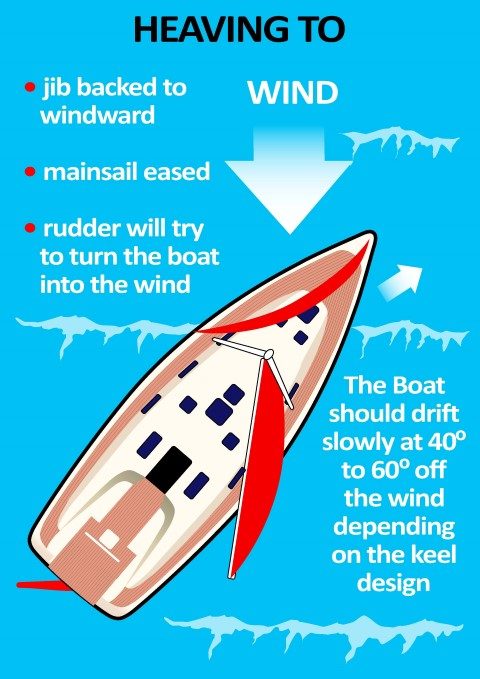Heave-to
The purpose of heaving to wind is to keep the boat stationary or barely making headway while the sails are up. We accomplish this by backing the jib while the main is eased and the rudder is set to turn the boat into the wind. It is a matter of balance the rudder turning effect with the jib trying to push the bow downwind. The boat will barely move to windward and also slip sideways. Heave-to can be an effective storm tactic as well as just for taking a break for lunch.
The goal when heaving-to is to create balance between the wind, sails and rudder that effectively stalls the boat at a roughly 45-degree angle to the waves. With the bow absorbing the brunt of the wave power and the boat in a relatively stable position, life aboard becomes safer and more comfortable than in almost any other attitude. Some people also believe that as the boat slowly drifts downwind, a slick of turbulent water created by the keel has an additional dampening effect on the breaking waves to windward, making the situation more comfortable still.
Finding the right balance—where a boat will sit 40 to 50 degrees off the wind, riding waves without a care, and not giving up too much ground to leeward—depends on a boat’s sail plan, hull design, displacement, keel and rudder design and sea state.
